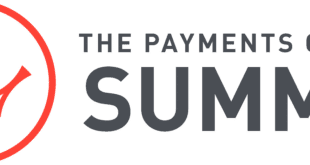How will the millions of cash-preferring U.S citizens pay for mandated health care coverage online? The answer lies in learning from other industries that have addressed the problem, says Danny Shader.
Millions of uninsured Americans who are attempting to buy health insurance as part of the Affordable Care Act are facing a technological hurdle. The hurdle has nothing to do with the technology available, but rather the technology that is not.
This is no small problem. Americans who rely on cash as their primary method of payment for necessities such as utilities and rent must now scramble for a way to pay for mandated health care using a method that has traditionally not been widely accepted in the industry.
The Cash Market
Since the advent of the Internet, many industries have migrated from Main Street to personal computers and mobile phones. As a result of this transition, businesses have embraced the convenience and efficiency of electronic payments over the Internet or phone and moved away from accepting cash.
But tens of millions of Americans still prefer to pay, or must pay, for products and services with cash. Many of these people can’t afford the often unpredictable fees associated with bank accounts and credit cards. Others choose to pay with cash to better manage their budget, avoid fraud, or preserve the privacy and security of their personal information.
Like most other businesses, health-insurance providers, doctors’ offices, and health exchanges that serve prospective and newly insured patients prefer to handle remote payments electronically via credit cards or bank-account transfers. Only a handful of insurance providers operate brick-and-mortar locations where patients can pay their premiums with cash.
Yet one in five households, or about 51 million adults, has little or no connection to a bank, according to federal statistics. Among uninsured Americans, nearly one in three lacks a checking account. As a result, these Americans are effectively unable to make payments after signing up for health insurance. At the same time, the organizations that wish to enroll these new health-care consumers are largely unable to serve them.
Reaching uninsured and cash-only consumers has already proven difficult for the industry. Early on, Covered California, the state’s health exchange, faced challenges boosting enrollment among Spanish-speaking consumers. who account for 60% of California’s uninsured, according to the Federal Deposit Insurance Corp. Indeed, a significant portion of the Hispanic population prefers to transact in cash and in person. Recognizing the problem, Covered California now supports in-person insurance agents and employs certified educators to aid with the enrollment process.
Hefty Fees
But making it easy for all Americans to sign up for health insurance is only half of the battle. Health-insurance carriers and providers also must make it easy for Americans to pay. Already, an estimated 20% of the people who signed up for health insurance under the new law reportedly failed to pay their first premiums in a timely manner, delaying federally mandated coverage and putting those individuals at risk of being fined for non-compliance.
And the problem is only growing worse. The industry must make it easier for all consumers, including the financially underserved, to make payments if carriers and health providers are to meet the demands of the dramatic boom of newly insured patients this year.
A federal rule stipulating that health-insurance companies allow all forms of payment requires that insurance companies and health-care providers find an efficient, error-proof, and fraud-free way to accept not just card or digital payments, but also cash payments. Furthermore, the methods must be private, convenient, and scalable to accommodate millions of underserved Americans within the stringent demands of the 1996 Health Insurance Portability and Affordability Act.
One way health-insurance companies are attempting to solve the problem is by accepting payments via prepaid debit cards and money orders. However, prepaid cards can be expensive, inconvenient, and risky, given that many come without federal fraud protections. As for money orders, many money-transfer outlets require consumers to provide some form of personal identification, such as a Social Security number, to make a payment. That presents a range of potential challenges related to privacy and information security.
It is also important to consider who bears the cost of the payment. At the moment, costs for payment methods most often used by the banked population—electronic funds transfers, checks, and credit/debit cards—are covered by the insurer. However, the costs associated with money orders, cashier’s checks, and prepaid cards, all of which can carry hefty fees, must be covered by the very customers who often can least afford it.
Learn from Others
One solution preferred by key advocacy groups is to have a cash-centric alternative with low associated fees that could be covered directly by the insurer. Clearly, customers would benefit from reduced out-of-pocket expenses. But this would also be a great incentive for insurers, since they would be providing a convenient alternative for their underserved customers, thus increasing retention.
Keeping payment costs and other administrative costs under control is in everyone’s best interest. But don’t forget that transaction fees are rarely the only costs associated with payments. There are also costs for exception handling, fraud, chargebacks, and manual processing. Minimizing, or even eliminating, these “hidden costs” should be a consideration.
In this respect, there is an opportunity to learn from other industries and consider additional payment alternatives. Financial institutions, utilities providers, and property-management companies have already begun to adopt technology for error-free cash-payment acceptance, enabling unbanked and underbanked consumers to conveniently make payments in their own neighborhood.
Health-insurance carriers and providers gain a competitive edge when they meet the needs of this market segment. But, most important, it benefits all consumers to have a variety of convenient options available when paying for the coverage they’re now mandated to maintain.
–Danny Shader is chief executive of PayNearMe, Sunnyvale, Calif.




